|
|

Four Sides Silver Cartouche
Price $90.00
On Sale $65.00
|
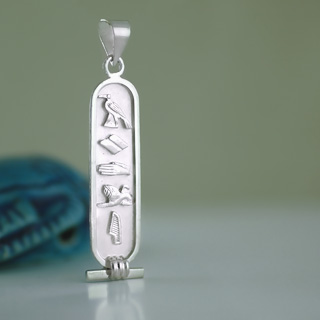
Nilestone Famous Egyptian Silver Cartouche
Price $39.00
On Sale $27.00
|
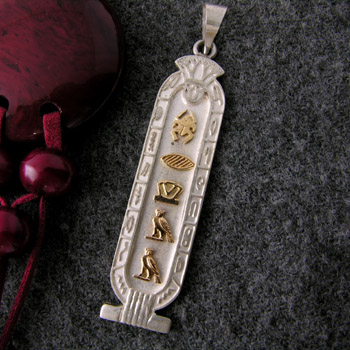
Silver cartouche with lotus alphabet border and gold symbols(personalized gifts)
Price $110.00
On Sale $89.00
|
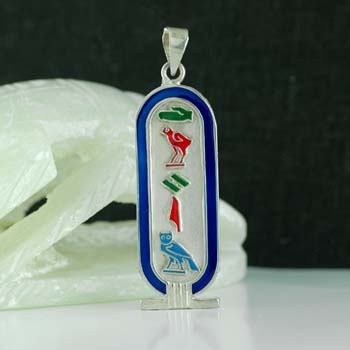
Silver cartouche with colored enamel borders and Colored symbols.
Price $55.00
|
|
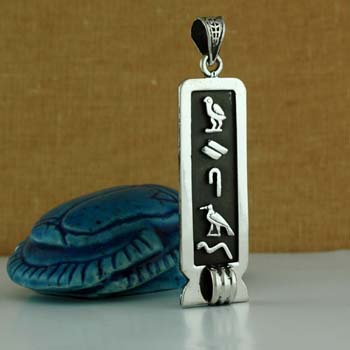
Silver customizable Egyptian Box Cartouche with Dark Background
Price $55.00
On Sale $43.00
|

Lotus Silver Cartouche with Dark Background
Price $57.00
On Sale $46.00
|

Silver Double Sided Egyptian Cartouche with hieroglyphic symbols table on the back. With dark background.
Price $54.00
|

Silver Twin Egyptian Cartouche with hieroglyphic symbols table on the side.
1-4 characters: $45
5-7 characters: $60
8-9 characters: $70
|
|

Silver cartouche pendant with 18k gold hieroglyphics symbols
1-4 characters: $77
5-7 characters: $81
8-9 characters: $87
|
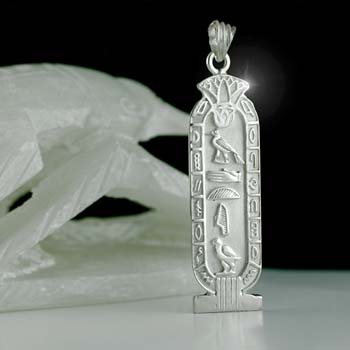
Silver customizable Egyptian cartouche with lotus and hieroglyphic border
Price $35.00
|

Silver cartouche keychain with dark background (personalized gifts)
Price $65.00
|
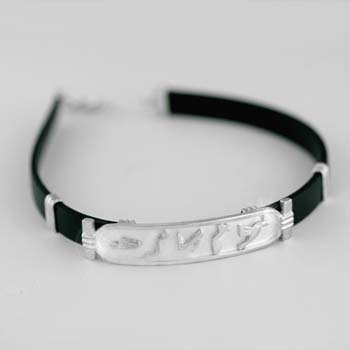
Silver cartouche with a Rubber Band bracelet
price $54.00
|
|
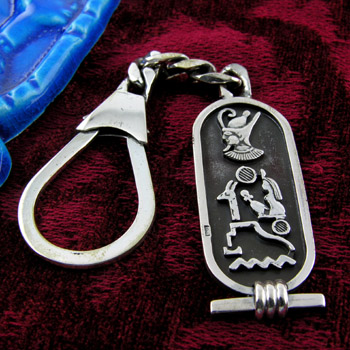
Silver cartouche keychain with dark back ground (personalized gifts)
Price $64.90
On Sale $52.90
|

Silver hexagon keychain with engraved Nefertiti head (jewelry gifts)
Price $55
|

eye of horus Silver cartouche
price $38.00
|
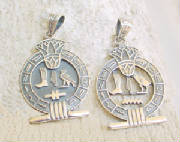
Silver Egyptian Cartouche with hieroglyphic symbols table inside
1-4 characters: $50
5-7 characters: $60
8-9 characters: $70
|
Each Silver Cartouche from Egypt is handcarved and crafted to order by skilled Egyptian artisans. A Cartouche was a loop of
rope with a knot at one end. It was thought to represent the universe. The custom of writing the Pharaoh's name inside the
Cartouche represented his rule over the universe.
During the initial Islamic invasion in 639 AD, Egypt was ruled at first by governors acting in the name of the Ummayad Caliphs
in Damascus but, in 747, the Ummayads were overthrown and the power of the Arabs slowly began to weaken. Although Egypt remained
under the nominal rule of the Abbasid Caliphate, its rulers were able to establish quasi-independent dynasties, such as those
of the Tulunids and the Ikhshidids. In 969 the Ismaili Shi'a Fatimid dynasty from Tunisia conquered Egypt and established
its capital at Cairo. This dynasty lasted until 1174, when Egypt came under the rule of Saladin, whose dynasty, the Ayyubids,
lasted until 1252. The Ayyubites were overthrown by their Turkish bodyguards, known as the Mamluks, who ruled under the suzerainty
of Abbasid Caliphs until 1517, when Egypt became part of the Ottoman Empire.
|

